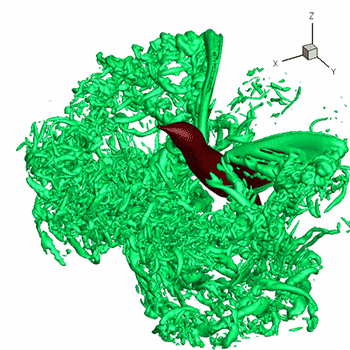#y=1.4x^2+5.6x+3# is in the form #y=ax^2+bx+c#
To find the #x# coordinate of the vertex, use the formula #x=-b/(2a)#
#x=-b/(2a) = -5.6/(2*1.4) = -2#
To find the y coordinate of the vertex, plug #x=-2# into the equation.
#y = 1.4(-2)^2 +5.6(-2)+3= -2.6#
The vertex is #(-2,-2.6)#
Use the formula for the vertex form of a quadratic.
#y=a(x-h)^2+k# where #(h,k)# is the vertex.
#y=a(x+2)^2-2.6#
To find the constant #a#, find a convenient point that satisfies the original equation. Typically, the y intercept is found, because the algebra is simple. In other words, find #y# when #x=0#.
#y=1.4(0)^2+5.6(0)+3=3#
Thus, a point that satisfies the equation is #(0,3)#
Use this point to find #a# by substituting it into the equation for the vertex.
#3=a(0+2)^2-2.6#
#3=4a-2.6#
#5.6=4a#
#a=1.4#
Substituting #1.4# for #a# into the vertex form equation gives
#y=1.4(x+2)^2-2.6#
There is another process for converting standard form to vertex form called completing the square. If you need to learn this method, please comment, and I will add it to the answer.

